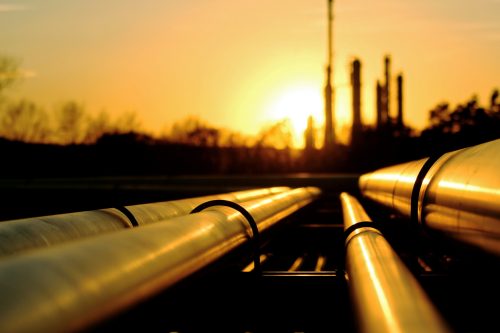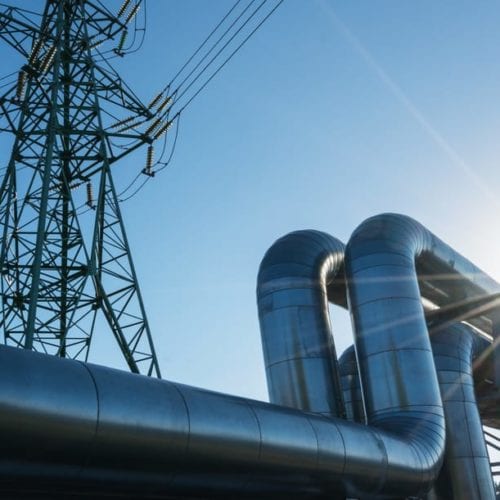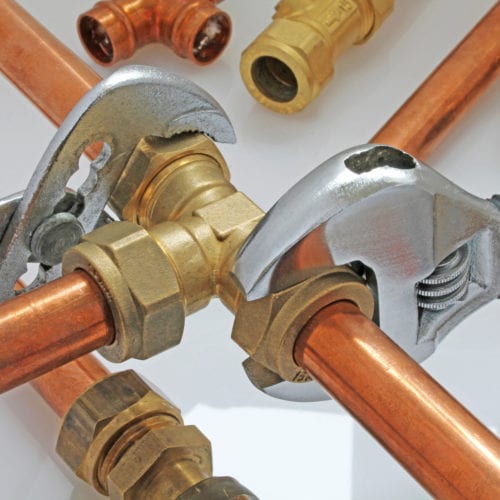
New York Can Meet Its Energy Needs without a New Pipeline
A prolonged battle over a natural gas pipeline in New York is presenting state officials with a critical decision point and an opportunity to establish themselves as national leaders in climate action. In contrast to utility National Grid’s proposal to build a $1 billion gas pipeline to serve customers in New York City and Long Island, there is another path to meet those energy needs, utilizing customer-focused solutions like energy efficiency, electrification, and demand response.
Resisting the call for new gas infrastructure and charting a different course requires bold, unprecedented steps, but such ambitious action is better for residents’ health and critical to meeting the state’s ambitious climate goals, and can also be cost-effective.
How We Got Here
For months, National Grid has been locked in a contentious fight with Governor Andrew Cuomo and environmental groups over the proposed Northeast Supply Enhancement Project (NESE), a major new gas pipeline that would run into New York City. National Grid proposed the pipeline to keep up with projections for rising gas demand in downstate New York, and when its proposal was rejected by New York’s Department of Environmental Conservation last year, the utility stopped connecting new customers to gas service. After a heated back and forth with Cuomo, National Grid committed to presenting a range of long-term solutions to close the projected gap between gas supply and demand in the region.
National Grid detailed its vision in a report released this week. The wide-ranging analysis describes the utility’s expectations for a capacity shortfall in the coming years and a range of options to close that gap. The main options presented include the NESE pipeline, smaller infrastructure solutions like a new gas line within Staten Island or upgrades to compressor stations in New York and Connecticut; or customer-focused solutions that do not require new infrastructure: energy efficiency, demand response, and electrification. Other options, such as a new liquefied natural gas terminal on Long Island, appear unrealistic.
The NESE Pipeline Is Incompatible with New York’s Climate Policy
Gas use is a major part of New York’s climate and air pollution woes. New York consumes more gas in its buildings than any other state. It’s also the top state in terms of direct building emissions, contributing 10 percent of the nation’s total.
Last year, New York’s legislature and Governor Cuomo made a major commitment to climate action, passing the Climate Leadership and Community Protection Act (CLCPA). The CLCPA commits the state to emissions reductions of 40 percent from 1990 levels by 2030 and 85 percent by 2050. Along the way, the state’s electricity system must be 70 percent renewable by 2030 and 100 percent emissions-free by 2040.
To meet these goals, the state will have to make dramatic reductions in the emissions from gas burned in buildings and is actively developing a roadmap to a carbon-neutral building stock statewide. National Grid’s latest projections, showing gas use growing through 2035, are simply incompatible with the required emissions reductions.
The only path that enables the level of emissions cuts required is the customer-focused package of energy efficiency, electrification, and demand response. Unlike the other solutions offered, these initiatives—particularly efficiency and electrification—reduce gas use and directly cut fossil fuel emissions.
National Grid has presented this information in a confusing manner, providing charts indicating both that electrification could increase electricity emissions more than continued gas use and that electrification will reduce emissions substantially over time. However, with the rapid decarbonization of the electricity system required by policy, it is clear that shifting from gas heat to electric heat pumps will cut emissions and put the state on a path to hit its long term targets, while continued gas use will not.
The report notes that biomethane (RNG), hydrogen, and potentially synthetic methane from power-to-gas processes could play a valuable role in eliminating greenhouse gas emissions. However, it also shows that these resources can play only a small part in addressing the downstate supply issue – covering less than 5 percent of the supply gap in the high demand scenario, and subject to uncertainty regarding new project development over time.
And even to the extent these resources would be brought in from outside the region served by a new pipeline, their costs and implementation hurdles are not addressed in the report, leaving a comparison between one solution consistent with state climate policy (efficiency, electrification, and demand response) and one solution inconsistent with these climate goals (NESE pipeline).
Customer-Focused Solutions Can Be Cost-Effective
National Grid’s analysis claims the NESE pipeline could be more expensive than the “no infrastructure” customer-focused solutions (in a low-demand scenario) or less expensive (in a high-demand scenario). But key factors appear to be missing from this comparison, omitting both added costs likely in the NESE scenario and added savings in the “no infrastructure” scenario:
- While the “no infrastructure” scenario makes substantial progress toward achieving New York’s climate policy goals, the NESE scenario does not. This means additional investments would be needed under the NESE scenario to bring emissions down to a climate-aligned path. Presuming New York state and National Grid are committed to meeting the state’s climate goals, these investments will be required, but they are not identified, nor are their costs estimated.
- National Grid’s cost comparison relies on a net present value (NPV) calculated over 15 years. However, the year-by-year cost breakdown shows the NESE scenario incurs consistent costs through 2035, while the “no infrastructure” option produces annual savings by 2035. Presuming this trend continues beyond 2035, the decision to truncate NPV calculation after 15 years disguises infrastructure costs in later years.
- The costs of electrification appear to omit the air conditioner cost savings available to consumers who adopt heat pumps. While detailed analysis is not provided to verify this point, the text only addresses cost comparisons of heating appliances, ignoring the fact that heat pump investments avoid the need for spending on separate air conditioners.
- National Grid’s analysis does not factor in any externality costs – from greenhouse gas emissions or from air pollution. Consideration of these costs would add to the price tag of infrastructure-based solutions that include growing gas use.
- Taken together, these points suggest the customer-focused “no infrastructure” option is much more cost-effective than presented, even in high demand scenarios.
Customer-Focused Alternatives Will Provide Health Benefits and Local Economic Development
Gas and oil burned in residential and commercial buildings contribute to air pollution and health consequences for people across New York state. Recent research appearing in Nature showed that premature mortality related to air pollution from buildings has been growing in New York state, and that cross-state air pollution effects mean pollution from New York buildings contributes to premature mortality in neighboring states. These pollution effects stem from both gas and oil combustion, indicating opportunities to reduce use of both fuels through efficiency and electrification can support better health outcomes.
Additionally, for both the energy efficiency and electrification programs, National Grid’s report is clear that “a significant portion of these investments will go directly into the downstate economy” and that many different businesses will add local jobs over the duration of the program. Furthermore, efficiency gains will improve the health, comfort, and safety of buildings.
The Non-Pipeline Solution Is a Reliable Option to Meet Energy Needs, State Goals
National Grid rates the NESE pipeline higher on “reliability” than the customer-focused alternatives. This isn’t surprising—building new fossil fuel pipelines is a familiar approach, while aggressive investments in efficiency and electrification are unfamiliar and unprecedented at this scale. In this sense, the pipeline decision is a microcosm of bold climate action at large. Decarbonizing an economy is uncharted territory, while continuing to burn fossil fuels prolongs the current trajectory toward runaway climate change.
Successfully implementing the non-pipeline solution will require fundamentally different approaches, and not just incremental growth in utility programs. If state leaders are serious about demonstrating climate leadership, they should open consideration to new creative approaches, including those that create new business models and funding for National Grid to decarbonize heating across its service area, and those that put some of the burden on other entities, such as ConEd, PSEG Long Island, and NYSERDA.
New York leaders made headlines last year with their ambitious commitment to carbon neutrality. The looming decision to build the NESE pipeline or pursue customer-focused alternatives is the first real test of that commitment. This is an opportunity to set the tone for climate leadership in the United States and to show that the state will back up its words with serious action.

